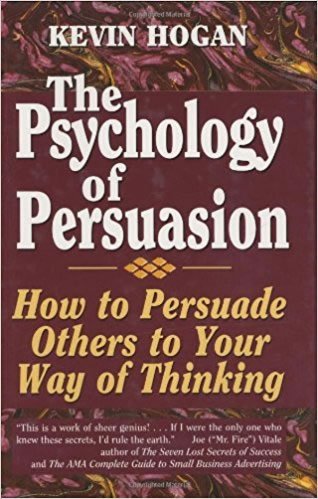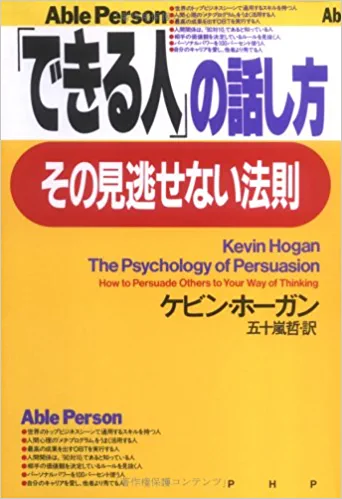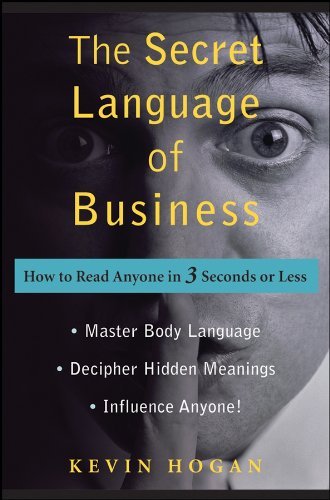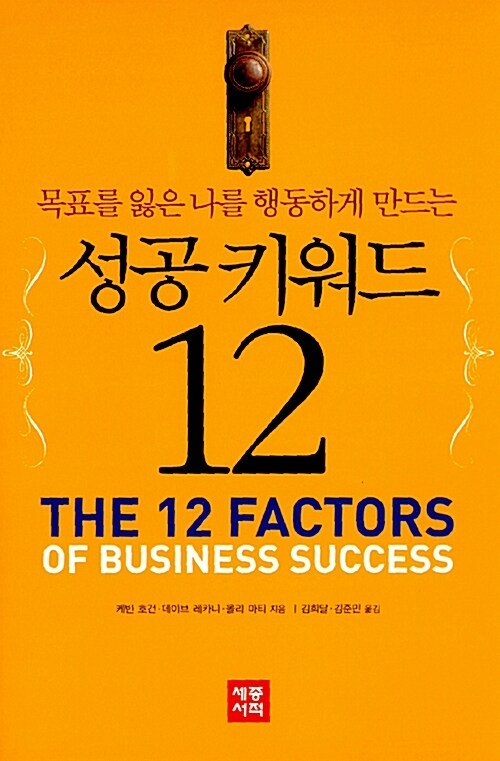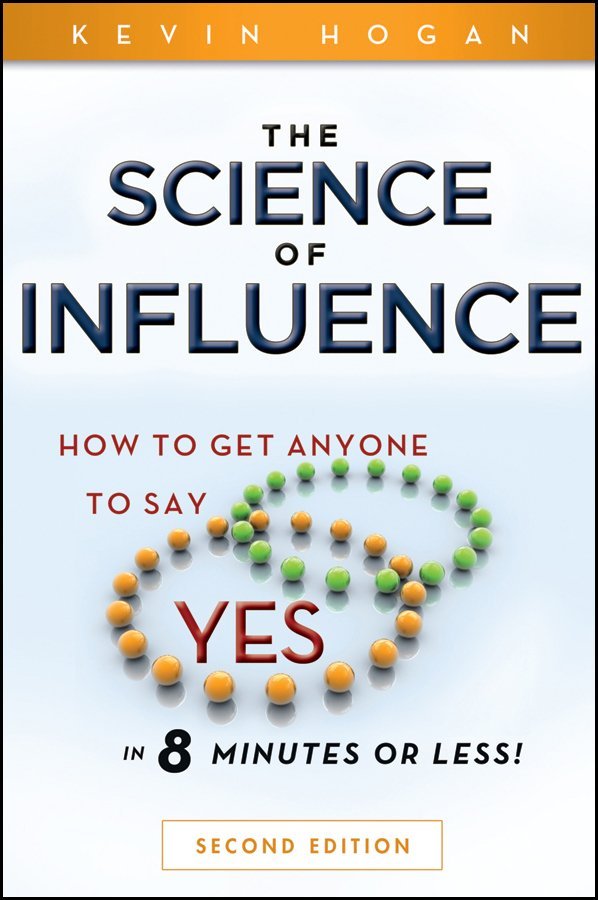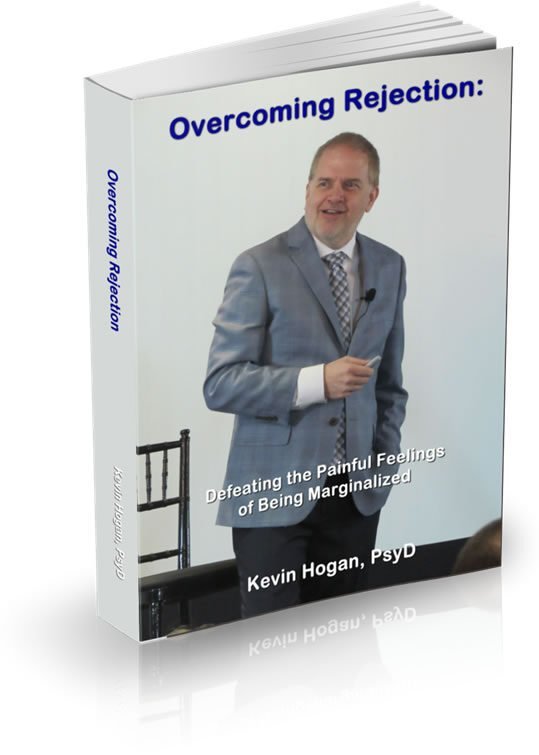“How do I change someone’s mind?” The greatest challenge you often face in communication is changing another person’s errant thinking, particularly when their thinking, or their belief is not just wrong but dangerously backward.

It’s a simple problem. More than any time in history that comes to mind, we have more errant thinking and bizarre beliefs than anyone could have expected.
Use of online search engines while incredibly valuable in some contexts is the cause of more polar (and largely useless) and confirmation biased thinking than we’ve ever seen in history.
People believe what they read in the first result they find at google because they already had a mindset or belief and of course google didn’t take you to a page where the belief is debated or discussed in a balanced fashion, nope… it takes you to the page that reinforces your thinking. And of course as potent as google is at this, Facebook is better.
Facebook’s algorithms are spectacular at keeping the SQ on everyone’s confirmation bias.
They know precisely how you think about everything. They know who among your friends is most like you and you are shown their posts in your stream. Other points of view having a rational discussion? Nope.
So no matter what a person believes the biggest search engines on the planet are giving people more of the drug they crave.
People believe the stupidest things and the problem is simply getting worse.
Someone needs to take the forefront and start putting thinking back in the world and that begins with belief shifting. Sometimes you have to change yourself and sometimes you have to change others.
How do you effectively and permanently change their mind?
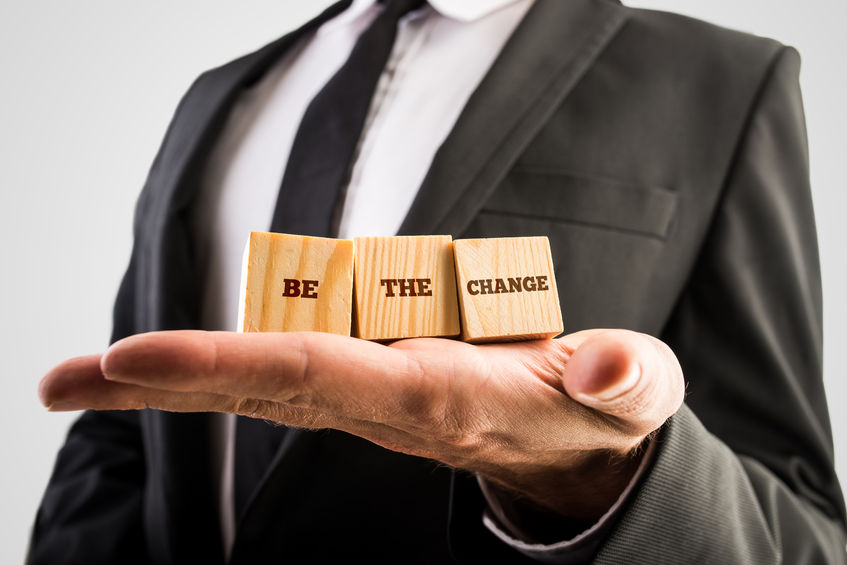
Two weeks ago I showed you how people’s beliefs can be changed in an instant. This can happen when prompted to make a choice and then offer a reason or supporting facts to at least one person PRESENT. The permanence of those new beliefs are often as strong as those created with the method I want to share with you today.
So why bother learning ANOTHER tactic to change beliefs?
You can create forced choice options that will be considered by as many as half of people in a broad range of contexts. And that is nothing short of remarkable. There are of course many contexts where that will not be be possible. In other words perhaps in 25% of situations the forced option belief change communique can be utilized and it will almost always achieve the desired result.
You need more than one method of changing someone’s mind quickly, ethically and with wisdom and sensibility.
You…become The Influencer.
Put the step by step process here into practice and you will be in charge of directing minds in most situations you encounter.
At the end of this article, I’m going to give you a nice bonus. I will show you the single absolute most important technique for making beliefs stick within you…or someone else.
In order to effectively change minds, you begin practicing with your own mind frames. Here are some things you might have believed at one time or another.
- They leave the financial planner’s office. Tomorrow they feel they are on the road to financial freedom.
- They leave the weight loss class. Tomorrow they wake up and feel they are on their diet.
- The speaker finishes his motivational speech. They feel great. The next day they wonder why they are doing nothing.
- Their ad appears in the paper or online. They feel like they’ve now done marketing for the day/week/month. (Nothing has happened!)
- They walk out of the therapists office feeling better. Resolution and change have occurred. The next day they are sad in in pain again.
- They hired the right guy for the job. They think a problem has been solved. (I don’t know where to begin on this one.)
- They start a business, feel great then wonder what they’re doing wrong because they aren’t making money!
People believe their tiny action will have a real impact on making a better life in some way. But here’s the truth:
No one leaves the meeting and is on their diet. It hasn’t begun.
Beliefs like those mentioned above are some of the destructive causes of failure in people’s lives. Sadly there’s a lot of people that want to sell this type of thinking to you, your family and friends.
You’re smarter than that.
When someone tells the person at the end of the days discussion “you’re on the road to financial freedom,” they are wrong.
That night, the person looking to lose 40 pounds goes home from class and is filled with lots of motivation. They stare down the cookie jar. They win. They go to bed. Tomorrow life happens. The kids get into a fight, the school calls about a problem, the IRS sends you a letter, the hotel loses your reservation…stress happens. As the day goes on life beats you up and down and nothing seems to go right.

They/you get home. They eat lightly at dinner remembering that they only have 6 months to go to lose their 40 pounds. But the massive amounts of stress have caused the body to pump stress hormones into the body and brain. The brain’s serotonin levels reduce rapidly and the cravings begin about 10 PM. An hour later. The fingers are in the cookie jar. 27 hours after the class begun they have broken their diet that they believe they had “started.”
To change their mind you will do this…
Continue…
You can switch this story for all the other above scenarios, as they are all the same. I’ll do one more for you. You do the rest.
Leaving the financial planner’s office, you are convinced that you must save $300 per month to have a good chance at a “secure future,” “becoming a millionaire,” or maybe even “financial freedom.” You go to bed excited. You have begun…or so you think.
The next day life happens. Kids fight. School calls. IRS letter arrives. Hotel loses reservation. Nothing is going your way. You and the other person in your life start talking about vacation/car/diversion X. You salivate with thoughts of relaxation, beaches, palm trees and ocean waves. You’ve had it. You get on line and book the vacation. You haven’t taken one in months. Or perhaps you buy that car. Yours is getting old. It’s a ’98 for heaven’s sake. Or…perhaps you do both. After all, you can always stash that $300 next month. It’s not THAT big of a deal.
And so it goes.
The short-term stress responses to life easily overtake the long-term needs and wants for the future. It’s why the homeless women are typically grossly obese. It’s why the guy who is living paycheck to paycheck drives a recent model and the 55 year old woman who has $20,000 in retirement is off at Macy’s rewarding herself for an exhausting week.
The short-term hit of a cigarette fills the pleasure centers of the brain in a way that is far greater than what the entire REST of the brain can fight with any arguments of health or long-term hopes.
The person believes that they will achieve the goal anyway, or, they will immediately determine…in the moment that the long-term result isn’t as important, and that they DESERVE the short term hit. (The cookies, the car, the diversion, the whatever.)
Believe.
That is the beginning and ending of the person’s problem. They left the office THINKING they changed. The company THOUGHT they were motivated.
Who were they all kidding?
Behavior and beliefs had not been changed. The madness had only stopped for the moment. Usually it lasts 24-48 hours, then the person returns to their old behavioral patterns. What else COULD they do? Nothing different.
BELIEFS had NOT been changed.
“So Kevin…. just WHAT does change someone’s mind?”
What Builds Belief?
A belief is born or reinforced, for example, in that declaration in a forced choice situation. They are also built upon habits, actions and experienced evidence. Imagine: Someone goes to Synagogue every Sabbath. They turn the lights off at sundown Friday. They rest and pray on Sabbath. They have dietary habits and rituals that are unique to their “belief structure.” The rituals and lifestyle are unwavering.
Before we go on….Note: Some beliefs are good. Some are bad. Some are deadly.
Beliefs rarely change. It is very difficult to change when someone has experienced, taken actions and formed habits. The person going to Synagogue is happy. It gives them peace. They are fulfilled. They are happy. They would resist change and with rare exception…will not. I would argue this is a good set of beliefs to continue this lifestyle. Many would argue otherwise, which is just fine.
Let’s look at a deadly belief.
The girl is 31 years old. She weighs 450 pounds. She is transitional homeless. (Moves from place to place collecting the dollars and entitlements due such a person.) Her only positive feeling in life is the trip to the fast food restaurant (not an evil place, by the way) which costs less than $7 for her and her son. They do this 5 or 6 days each week. For the hour after eating, she gets her only moments of “feeling good.” Those moments are very real and she does deserve to be happy.
But she will die soon and her six year old son will be permanently homeless and foster care becomes grossly difficult to make happen at this age.
The short-term “feeling” causes beliefs to be reinforced everyday that cause her to overlook the long-term value of her life to herself, her family and her son.
She’s not a bad person. In fact, the opposite is true. She’s an earnest Christian. Everyone loves her and wonders how it could all be the way it is for her. Tragic, yet very real. In a free society it should never happen. But beliefs are reinforced daily one way or the other and they are very, very difficult to change.
Those who tell you differently are dead wrong and need to visit reality soon.
Is there any hope of changing their beliefs? Not just the 31 year old woman or the smoker but all of the people we talked about. WHAT IF THEY DON’T WANT TO CHANGE?!
Saving a crazy world is simply necessary. Next, “change” doesn’t happen like any of the would-be gurus or “experts” tell you it does. They are dead wrong and don’t want to know differently because they “believe” they are right. Sadly these random Influencers wreak havoc in the world. Because so many people listen to the most evil of all Influencers, bad things start to happen to idea followers. Many go broke, suffer or die. Here’s how you will be different.
Maybe you heard me share this sequence from the stage. The guru tells you that to create a belief, you affirm something to be true. Repeat the affirmation over and over. (After all, repetition is the mother of learning.)
I am a millionaire.
I am a millionaire.
I am a millionaire.
I am a millionaire.
Your unconscious mind says,
“You are a liar.”
And the unconscious mind will punish you precisely how your parents did for lying. It will not be good. I see it all the time.
“You are your own worst enemy.” This isn’t entirely true. A lot of family and friends compete with politicians and others “leaders” but the fact is that most people don’t help themselves in any meaningful way.
The unconscious has learned that you are a liar and because you lied, you will not get what you asked for. And should you try, you will now be self-punished.
Your brain is a remarkable thing. It’s too bad humans don’t learn to control the minds activity as is possible.
Stop the mindless affirming lies and the unconscious mind MIGHT give you what you want. But don’t push it.
Beliefs rarely, if ever, come from repeating a sentence over and over.
Beliefs can come from SOMEONE ELSE painting verbal pictures of affirmation for you. If you are sure they are right because that IS who they ARE, you WILL change.
The weight of others has always had far more impact on who you have become than anything you ever said or say.
The First Step
The first step in changing a belief is to establish what you WANT to believe and choose how you will behave and BE.
For example: Perhaps you want to weigh 30 to 40 pounds less.
That’s right you want to have a RANGE and NOT a specific number in mind. This is important as ranges are shown to dramatically increase likelihood of meeting outcomes and STICKING to them.
That’s fine. It’s do-able. You can make a picture. But you did that in the weight loss class. Big deal. It failed on day two. And so will the process of true belief change, if you stop at step one.
Step Two
Each day you perform behaviors and actions that will allow you to get instant feedback about your work. This feedback can become foundation for new beliefs and the cementing of behavior.
In real life, for the person who wants to lose weight, it means the following.
- Write down how many calories you want to consume BEFORE you consume them or you don’t eat.
- Write down the total calories consumed by the end of the day and circle the total if you succeed in meeting your intake goal for the day.
- Round all calorie consumption estimates up to the next 50 calories.
- Do not starve yourself.
- Do not try and lose 30-40 pounds or ANY AMOUNT of weight from this moment forward.
- Simply track your calories before you eat and keep the paper you track them on for one year.
- At the end of each week write down the average per day calories. ex. 2500 @ 7. That means you averaged 2500 calories per day that week. You are NO LONGER measuring pounds as your measurement tool but the calories. Pounds (kilos) are notoriously tricky in their variability from time of day to time of month. So are scales. They vary as much as 4 pounds each time you step on one. Track the calories. The pounds will come off in due time.
There is more, but this is not an article about weight loss. It’s an article about changing beliefs, right?
Control a Cause

Now, when you track these calories (dollars saved, days without a cigarette or reduced number of cigarettes, or sales in the company) you are tracking one of the two basic causes of weight loss or gain. You are now CONTROLLING a CAUSE.
When you control a cause, and see that you have done so for MONTHS, you start to BELIEVE that you can CONTROL your eating AND your weight AND the tracking becomes as ritualistic as showering and combing your hair.
How do you convince YOURSELF that you are in control?
Continue…
This is how you teach yourself habit, action taking and evidence for new beliefs. The belief is, “I can determine how many calories I eat.”
The belief has nothing to do with how much you weigh.
The same is true for monetary goals for your new project. Forget the monetary goals. You can’t CONTROL the outcome. But you can control the behaviors that bring long term results.
The evidence in the weight loss scenario is the daily proof that YOU decide how many calories you will intake every time you open the refrigerator and that YOU decide how many calories you will consume that day.
What if you go above the number you choose? What if you don’t make as many calls as your goal? What if you smoke a cigarette? What if you fall back into the habit of procrastination for one day?
That’s life.
ASSUME that will happen when you begin our LONG-TERM plan. There will be 5 or 10 days in the course of the year where you don’t achieve the daily desired outcome. That is just fine. It’s part of the plan. Failing on any given day means you are living. It means you are PAYING ATTENTION. People who don’t pay attention can’t succeed. Ever.
You are building evidence to support your very young belief that YOU are in CONTROL. As time goes by the evidence mounts and soon you can show anyone with absolute certainty that you are succeeding and that you can replicate this in any area of life.
Someone gains weight for the same reason they don’t make sales calls, for the same reason they put the manuscript on the shelf and don’t send it to the publisher, for the same reason they smoke. It’s ALL the same. The person does NOT BELIEVE THAT THEY ARE CONTROL and they PROVE IT ALL DAY LONG. An endless loop that leads to the bottom of the Canyon, never to return….
Creating Images that Motivate All Day Long
 If someone wanted to “be motivated” to make sales calls, there are several sets of images that you need to plug in (probably using covert hypnosis or covert conditioning). I’ll use the selling example specifically.
If someone wanted to “be motivated” to make sales calls, there are several sets of images that you need to plug in (probably using covert hypnosis or covert conditioning). I’ll use the selling example specifically.
- The person getting up out of bed thinking about their long-term desired lifestyle outcomes.
- Going into the shower thinking about their daily outcomes.
- Coming out of the shower thinking about the first person who turns them down or treats them with disrespect and HOW THEY (the person you are working with) RESPOND to the turn down.
- Going to the office thinking about more outcomes both positive and negative, with the negative outcomes ALWAYS having specific responses that are realistic and achievable to be programmed in. (He hung up on me, I felt bad for a minute, shrugged my shoulders, dialed the next number.)
- You need DOZENS of possible outcomes to each phone call, sales call. You need to know specifically what the person wants plugged into their brain realizing that negative emotions of rejection and failure are common and SHOULD be anticipated. That’s fine. It’s how the individual RESPONDS to those FEELINGS that matters. What does the RESPONSE cause them to do next? THAT IS THE BEGINNING OF BELIEF CHANGE because two hours later when they are in the office and they experience those negative moments they will have prepared feelings and responses for the situation that they will NATURALLY go to because they haven’t imaged them so many times they could go nowhere else. You can’t change the feeling of rejection. It is a biological reaction. YOU CAN CHANGE THE RESPONSE as to what happens NEXT and THAT is what must be plotted out.
You can look to other people, like role models, for examples of what to do next or how to respond, but each reaction and response MUST be of the person themselves doing the behavior.
How You Change their Fundamental Beliefs
 Now that the person has dozens of possible responses to a dozen or so likely reactions on the part of prospects or …customers, beliefs BEGIN to form. Like a baby forming in the Mother’s womb, cells divide, then SLOWLY take shape of life. That’s EXACTLY how it is with almost ALL beliefs.
Now that the person has dozens of possible responses to a dozen or so likely reactions on the part of prospects or …customers, beliefs BEGIN to form. Like a baby forming in the Mother’s womb, cells divide, then SLOWLY take shape of life. That’s EXACTLY how it is with almost ALL beliefs.
NOW, the person can say, with INTEGRITY, “When X happens, I feel Y then I immediately do Z.” That is a belief. It is based upon evidence both internal and external. It IS THEIR EXPERIENCE. It is THEIR HABIT and THEIR NORMAL BEHAVIOR. It’s that way because they have created dozens of experiences in reality and in their mind, to create ONE BELIEF.
Let me give you a couple of examples of beliefs that you might have that are validated every single day.
x) I go to the office 5 days per week. This belief is validated both internally and externally. They see it and they do it. It is validated over and over. It is now a belief. There is no ambiguity or loss of integrity. You believe what you imagine and what you do in reality. That is a belief that is going to stick.
y) I believe I own a car. This belief is validated both internally and externally. Every time the person sees the car, they recognize it as theirs. If their are no more payments on the car, it is validated in reality as THEIR CAR.
z) I have two kids. The belief is validated every day both internally and externally. (There may be doubts about having fathered other children, but these two are not ambiguous.) They are evidenced daily (assuming they live at home) and they are easily imagined.
These three beliefs are useful beliefs assuming you have 2 kids or a car or go to the office. You get the idea. They can be validated. They are unambiguous. They are beliefs for which significant evidence can be provided for.
They virtually prove themselves to be true every day.
That’s the kind of belief you need to have for any behavior that needs to be changed.
Unambiguous. These beliefs are SO CERTAIN that we don’t even think of them as beliefs but as “how life is.” Exactly….
Now let me show you beliefs that are ambiguous or are not easily validated. Notice the differences.
a) I have a secure job for as long as I want it.
Really? Most companies are out of business in half the life span of a human. What does “secure” mean? What does as “long as I want it” mean? Do you really believe it is YOUR choice as to how long SOMEONE ELSE will give you money in exchange for working for them?
This belief is naive. WHEN CHANGING and CREATING BELIEFS, STAY AWAY FROM THESE TRAIN WRECK BELIEFS. Here is another example.
b) My retirement is certain.
“Retirement” and “certain” are two ambiguous terms. They mean nothing. Not much in life is certain. Retirement means you will cease working. Most people will never be able to afford to cease working and the financial security of their retirement is rarely certain. This belief can destroy a person’s life. Think ENRON. Look how many thousands of people simply lost their retirement paychecks. Had people NOT believed that their retirement was certain they would have prepared in advance for their retirement assuming that the company would not fulfill on their promise. But people treat companies like they treat God. They trust unconditionally that the money will be there. The same is true with governments. NEVER allow these kind of beliefs into your mind or anyone elses. They are not able to be validated.
Find what is ambiguous or can’t be validated in each of these “beliefs” which really are simply erroneous assumptions that people live by. Ever see a house of cards fall down?
- I have a pension.
- Social Security will be there at least to pay the rent.
- My kids love and care about me.
- My spouse loves and cares about me.
- I will be successful.
- I will earn 350,000 in 2019.
As you find the ambiguous pieces of each “belief”, realize that you DO NOT want these beliefs to be wired into anyone’s thinking. The first reason is that they are very difficult to adopt because they make no sense if you have not been raised with the beliefs. That means the person won’t believe them. The second is that even if the person does accept beliefs like these, they won’t see the validation in real life until they are measurable and definable.
Evidence and Beliefs
Key Point: Also remember that just because something is unambiguous (I will have my current job until I decide to quit.) is not necessarily real or true. There is no evidence. Where there is no evidence for the belief disaster is waiting very nearby.
The point is that you must state what you want to know and what you want THEM to know so their world is not shaken to pieces when something doesn’t fit later. Nonambiguous is good, but evidence is even better.
Key Point: Many beliefs are actually not beliefs, but hopes or desires and they must be treated very differently than beliefs.
Lesson? Never lie to yourself or others about beliefs. Stay away from any belief that doesn’t have evidence to support it or you will have your world shaken.
Second Lesson? Do NOT teach yourself to lie, or your unconscious mind will punish you and literally CAUSE you to fail.
Instead: Break beliefs down into tasks like the weight loss example. “I will write five pages of my new book every day before I go to bed.”
or
“My kids love me because on Father’s Day they don’t just go buy me a card but they make really special things for me…” (It’s not proof…but it is evidence. You mounds of evidence!)
Useful beliefs that are NEW (because old beliefs were plugged in when you were three or four or five years old and you simply know those beliefs to be true…until you find out that they are not…) can be certified in reality by sensory experience and those are the beliefs that will STICK.
The Importance of Feedback
If you want a belief to stick, you must be able to tie (link) that belief to the feedback you get every day in your environment. You must tie that belief to every action you take from this moment forward. By accomplishing this, you may not get everything you want in life but you will have more than anyone you have ever met.
But wait, there must be more. It seems like something is missing…
…and you are right…two elements: feelings and emotions… and you’ll find out about the incredible impact of feelings and emotions in the process of changing beliefs forever in The Science of Influence, Volumes 25-36


